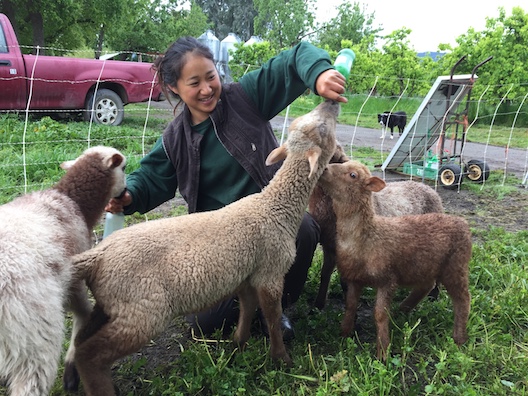Today I was part of a discussion about “healthy soil,” which in agriculture might be approximated to refer to soil that does a good job of growing crops. But with climate change upon us, soil health is increasingly discussed in the context of soil that keeps carbon underground rather than in the atmosphere, and there are discussions taking place all over the planet about which farming practices encourage reduction of greenhouse gases in agriculture. Agriculture is reportedly responsible for 10% of U.S. greenhouse gas emissions.
Soil and its health might not be something that comes up in our everyday conversations, but I remember when I read The Grapes of Wrath, and then later, several other books that described the American dust bowl and desperate attempts by farmers to carry on through blinding black dust blizzards, crop failure and other catastrophes. The Dust Bowl came after a period of drought coupled with an insufficient understanding of the ecology of the Great Plains. As farmers converted grassland to cropland, the deep network of grassy roots was destroyed and the unanchored soil turned to huge clouds of dust that choked people, buried farm equipment and blackened the sky, even reaching as far as the east coast. Tens of thousands of families abandoned their farms, and President Franklin D. Roosevelt created the Soil Conservation Service (now known as the Natural Resources Conservation Service).
Since the dust bowl, we have learned a few more things about soil… One of the reasons that organic farmers are hesitant to use chemicals on their plants and soil is that the surfaces of plants and the depths of the soil are full of life. In fact it isn’t at all a stretch to call the soil itself “alive.” Along with plant roots, healthy soil is full of bugs, worms, fungi, bacteria, protozoa and nematodes! We have barely a rudimentary understanding of this network of life, but each time there is research on it, we dig deeper into a profound appreciation of the interconnectedness of agricultural practices, plant roots and the soil microbiome. Believe it or not, in organic soils, plant roots are communicating with the microbes that digest organic materials and release nutrients, letting them know when it is time for them to buckle down and work a little harder — “more nitrogen, more phosphorus, get to work!”
The goal of farmers, in terms of ‘healthy soils’ has to go beyond crop yields to include an appreciation of the life within the soil. Practices like reduced tillage, use of compost and cover crops, keeping living roots in the ground, keeping soil covered, planting hedgerows and maximizing the diversity of plants and animals are included in the Healthy Soils Toolbox and many of these practices are already being put to work here at Full Belly Farm. One hopes that the lessons of the Dust Bowl have not been lost to the history books. Climate change could prove to be an equally serious catastrophe, this time affecting people all over the world. Changes in farm practice will not be easily adopted, but change we must. We thank our CSA members for supporting healthy soil by being a part of our farm!
—Judith Redmond

Every year during the February lambing season a few lambs need to be bottle fed, usually because they are triplets or quadruplets and their mom’s need a helping hand. This photo shows our last batch of bottle fed lambs, being cared for by our intern Emily.
